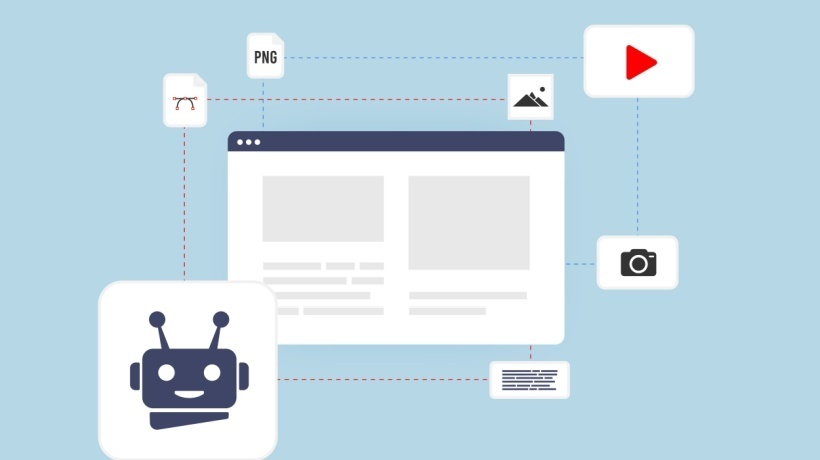Benefits Of No-Code eLearning Tools
No-code development is transforming how nonprogrammers create digital solutions. With these platforms, you can design interactive eLearning experiences without writing a single line of code. This democratizes technology, allowing educators and trainers to focus on content rather than technical complexities.
Benefits Of No-Code eLearning Tools
Using no-code tools offers several advantages. Firstly, it reduces development time. Traditional coding can take months, but no-code solutions speed up the process [1]. Secondly, it lowers costs. Hiring developers can be expensive, whereas no-code platforms are often more affordable. Lastly, it enhances flexibility. You can easily update and customize your courses to meet evolving needs.
1. Accessibility For All
No-code eLearning platforms democratize the content creation process, allowing individuals with varying technical expertise to design and develop high-quality learning materials. By eliminating the barrier of coding complexity, these tools enable educators to focus on crafting content that resonates with diverse learners, fostering inclusivity and accessibility.
2. Rapid Development
Gone are the days of prolonged development cycles. No-code eLearning tools accelerate the content creation process, enabling educators to swiftly prototype, iterate, and deploy learning modules. With intuitive drag-and-drop interfaces and pre-built templates, educators can efficiently design and update course materials, keeping pace with evolving learning needs and industry trends.
3. Cost-Efficiency
Traditional eLearning development often entails hefty investments in coding expertise and specialized software. No-code eLearning tools offer a cost-effective alternative, significantly reducing upfront expenses and ongoing maintenance costs. By leveraging user-friendly interfaces and built-in features, educators can create dynamic learning experiences without breaking the bank.
4. Flexibility And Customization
No-code eLearning platforms empower educators to tailor content to suit individual learning styles and preferences. From interactive quizzes and multimedia presentations to branching scenarios and gamified activities, these tools offer a plethora of customization options. Educators can adapt content on-the-fly, ensuring relevance and engagement across diverse learner demographics.
5. Scalability And Adaptability
As educational landscapes evolve, scalability and adaptability are paramount. No-code eLearning tools provide the scalability needed to accommodate growing learner populations and expanding course catalogs. With cloud-based hosting and seamless integration capabilities, educators can scale resources effortlessly and adapt to emerging educational paradigms.
6. Empowering Educators
By placing the power of content creation in the hands of educators, no-code eLearning tools foster a culture of innovation and experimentation. Educators are empowered to explore new pedagogical approaches, collaborate with peers, and iterate on course content in real time. This autonomy and flexibility drive continuous improvement and learner-centric innovation.
Popular No-Code Platforms For eLearning
There are many no-code platforms available. Various tools enable you to create comprehensive eLearning modules. These platforms provide drag-and-drop interfaces, pre-built templates, and various integration options. This makes the creation process intuitive and accessible to all.
Creating Interactive Content
Interactive content is key to engaging learners. No-code development allows you to incorporate quizzes, videos, and interactive simulations. For instance, some tools offer features to build branching scenarios, enhancing learner engagement through interactive storytelling.
User-Friendly Design Interfaces
No-code platforms prioritize User Experience. Their interfaces are designed to be user-friendly, allowing you to focus on the content. You don’t need any technical expertise to navigate these tools [2]. Features like drag-and-drop functionality make the design process straightforward and enjoyable.
Collaborative Features
Collaboration is crucial in eLearning development. No-code platforms often include collaborative features, enabling teams to work together seamlessly. Users can share projects with colleagues, get feedback, and make real-time adjustments, fostering a more dynamic and responsive development process.
Scalability Of No-Code Solutions
Scalability is another significant benefit. As your needs grow, you can expand your eLearning offerings without a complete overhaul. No-code platforms support scaling, whether you’re adding new courses or integrating more advanced features.
Enhancing Accessibility
Accessibility is a fundamental aspect of eLearning. No-code platforms make it easier to create content that meets accessibility standards. You can ensure your courses are inclusive, reaching a broader audience and catering to diverse learning needs.
Future Trends In No-Code eLearning Development
1. Artificial Intelligence (AI) Integration
The integration of Artificial Intelligence (AI) into no-code eLearning platforms holds immense promise for enhancing personalized learning experiences. AI-powered algorithms can analyze learner data, identify patterns, and deliver tailored recommendations for content delivery and assessment. From adaptive learning paths to intelligent tutoring systems, AI integration will enable educators to create highly adaptive and responsive eLearning experiences.
2. Augmented Reality And Virtual Reality Experiences
No-code eLearning platforms are increasingly incorporating Augmented Reality (AR) and Virtual Reality (VR) capabilities, allowing educators to create immersive and interactive learning experiences. Through drag-and-drop interfaces and pre-built AR/VR templates, educators can seamlessly integrate 3D models, simulations, and virtual environments into their courses. These immersive experiences enhance engagement, comprehension, and retention, paving the way for a new era of experiential learning.
3. Mobile-First Design
With the proliferation of mobile devices, no-code eLearning platforms are embracing a mobile-first design approach. Responsive design templates and adaptive content layouts enable educators to create eLearning modules that are optimized for viewing across various devices and screen sizes. Mobile-friendly features such as offline access, push notifications, and touch-enabled interactions cater to the needs of modern learners who demand seamless access to content anytime, anywhere.
4. Collaborative Authoring And Social Learning
Collaborative authoring features are becoming increasingly prevalent in no-code eLearning platforms, enabling educators to collaborate in real time on content creation and review. Social learning functionalities, such as discussion forums, peer reviews, and group projects, foster collaboration and knowledge sharing among learners. By harnessing the collective expertise of educators and learners, no-code eLearning platforms are driving a shift towards community-driven learning ecosystems.
5. Data Analytics And Learning Insights
No-code eLearning platforms are integrating robust analytics and reporting functionalities to provide educators with actionable insights into learner performance and engagement. Advanced data analytics tools leverage Machine Learning algorithms to analyze learner data, identify learning trends, and predict future learning outcomes. Educators can leverage these insights to personalize learning experiences, identify areas for improvement, and measure the effectiveness of instructional strategies.
6. Blockchain For Credentialing And Certification
Blockchain technology is poised to revolutionize credentialing and certification in the field of eLearning. No-code platforms are exploring the integration of blockchain-based solutions for secure credential verification and issuance. By leveraging blockchain technology, educators can provide learners with tamper-proof digital credentials, enabling seamless verification of skills and qualifications across diverse learning platforms and institutions.
Best Practices For No-Code eLearning Design
To maximize the benefits of no-code development, follow these best practices:
- Understand your audience
Tailor your content to meet the specific needs and preferences of your learners. - Keep it simple
Avoid overcomplicating your design. Clear and concise content is more effective. - Test thoroughly
Regularly test your courses to identify and fix any issues. - Gather feedback
Continuously collect feedback from learners to improve your courses. - Stay updated
Keep abreast of the latest features and updates in your no-code platform to leverage new capabilities.
Choosing The Right No-Code Learning Solution Development Platform
Selecting the right no-code platform for your eLearning needs requires careful consideration [3].
- Begin by clearly defining your specific requirements and objectives.
- Assess the platform’s features comprehensively, focusing on ease of use, customization options, and multimedia support.
- Ensure scalability by evaluating the platform’s ability to adapt to your evolving needs over time.
- Check for seamless integrations with other essential tools like LMSs or analytics platforms.
- Scrutinize the pricing structure to align with your budget constraints effectively.
- Gain insights from user reviews and case studies to gauge the platform’s reliability and effectiveness.
- Through meticulous evaluation of these factors, select a no-code platform that perfectly aligns with your educational goals and technical capabilities.
Conclusion
No-code development has revolutionized eLearning, democratizing the creation process and empowering nonprogrammers to design engaging and interactive educational experiences. By harnessing the capabilities of no-code platforms, educators and trainers can focus on delivering high-quality content without being hindered by technical barriers. These platforms offer intuitive interfaces, collaborative features, and scalability, making them ideal choices for organizations of all sizes.
Furthermore, the future of no-code eLearning development holds promise with advancements in Artificial Intelligence, Machine Learning, and immersive technologies. As the demand for flexible and accessible learning solutions continues to rise, the importance of choosing the right no-code platform cannot be overstated. By carefully considering factors such as specific requirements, feature sets, scalability, integrations, pricing, and user feedback, organizations can make informed decisions to meet their educational objectives effectively. Embracing no-code development opens up a world of possibilities, enabling the creation of dynamic and impactful learning experiences that cater to the diverse needs of learners.
References:
[1] 10 No-Code Solutions to Transform the way you do Business
[2] Why You Need No-Code Skills to Succeed in the Digital World
[3] How to Effectively Choose and Adopt a No-Code Platform: 10 points to consider!




